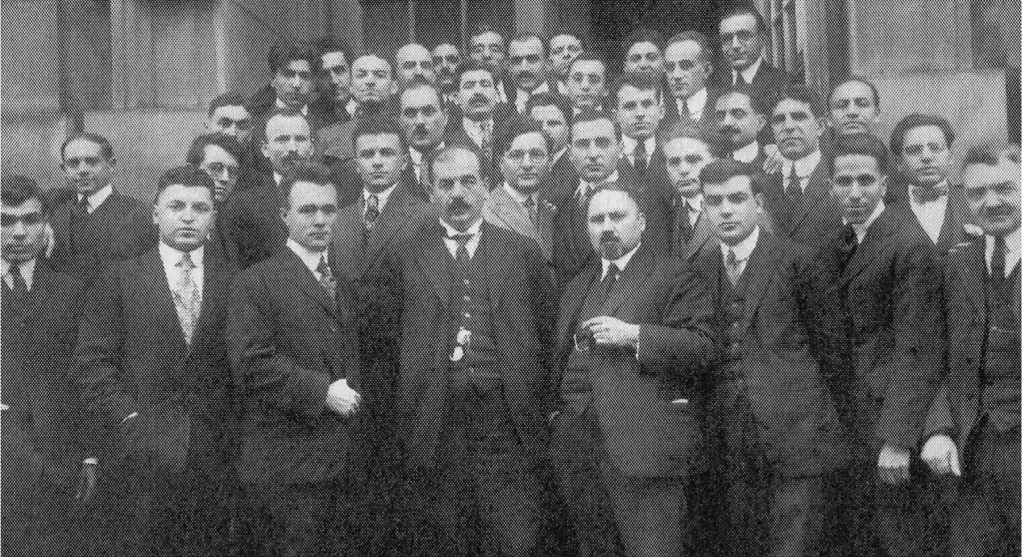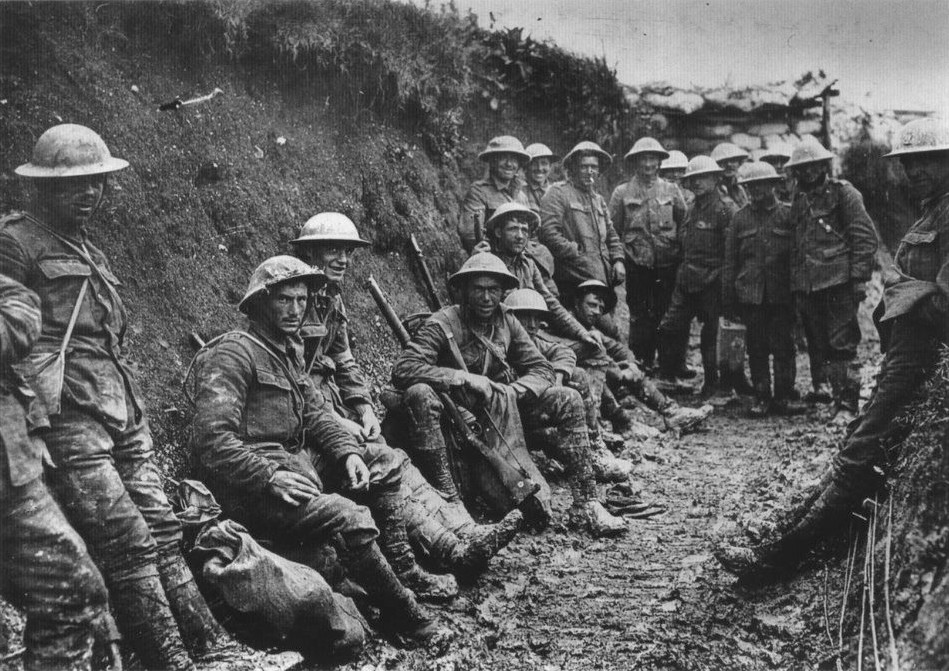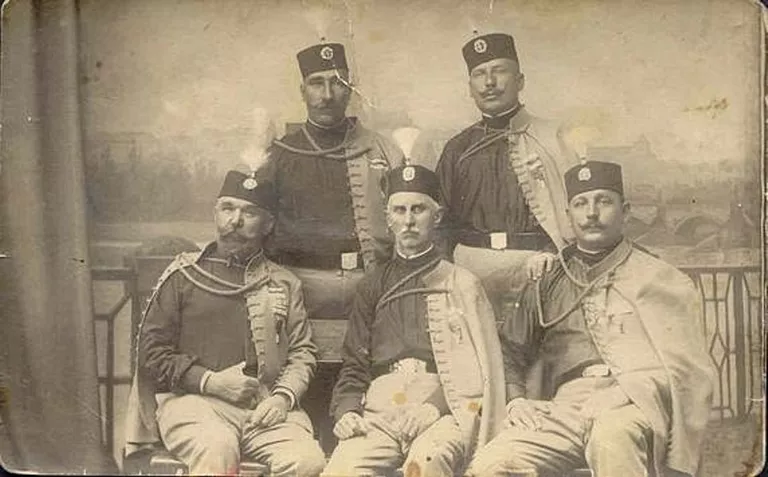The echoes of World War I and the Armenian genocide still resound throughout history. It was a bleak chapter that claimed the lives of 1.5 million Armenians. But, amidst the violence and despair, came a daring and controversial operation that shook the world.
In the early 1920s, a secretive group of Armenian survivors decided to meticulously plan and carry out their revenge. The program, designed to bring the perpetrators of the Armenian genocide to justice, would be known as Operation Nemesis, named after the Greek goddess of retribution.
They were led by a small, devoted group of revolutionaries. Their plan targeted high-profile individuals, leaders, and key architects behind the genocide.
Over multiple years, the group carried out a series of assassinations. They garnered attention from media outlets and governments worldwide, marking a turning point in Armenian history.
Today, Operation Nemesis remains a controversial and divisive topic. Some view it as a courageous response to the atrocities committed against the Armenian people. Others see it as an act of revenge and murder that only perpetuated the violence and deep tensions.
The story of Operation Nemesis is a dark and compelling tale of violence, justice, revenge, and the complicated nature of politics and history.

Marian Mesrobian MacCurdy/Kerning Cultures
Background: The Armenian Genocide
The Armenian people have had a presence in Anatolia going back many centuries. From the time before Jesus Christ to the present day. This included a part of the Ottoman Empire before and throughout World War I.
During World War I, from about 1915 to 1917, those in control feared the potential for Armenian independence. They began what is – controversially – known today as the Armenian genocide.
The Armenian genocide was a systematic campaign of violence and destruction against the Armenian people and their culture by the leaders of the Ottoman Empire.
Before the war, Armenians held a protected but subservient position within Ottoman society. However, the defeat of the Ottoman Empire in several military conflicts led to fears among leaders that Armenians would seek independence.
The Committee of Union and Progress (CUP), was the ruling political party in the Ottoman Empire and a faction of the Young Turks movement. They implemented the genocide through mass murder, death marches, and forced Islamization of around one million Armenians.
An estimated 800,000 to 1.2 million Armenians were forced to leave Turkey on death marches through the Middle East in the mid-1910s. This came at the behest of the Grand Vizier, or Prime Minister, Talaat Pasha.
Ultimately, it culminated in the deaths of more than a million Armenians and the displacement of hundreds of thousands more.
The Armenian genocide enabled the creation of an ethnonationalist Turkish state, the Republic of Turkey.
The Turkish government denies that the events constitute genocide and maintains its innocence. However, as of 2022, 33 countries around the world have recognized the events as genocide.
In response to the atrocities committed against the Armenian people, in the early 1920s, a group of Armenian revolutionaries began plotting to carry out a daring mission. This mission would eventually be known as Operation Nemesis.
Operation Nemesis is Hatched in Yerevan
Armenian survivors decided to take matters into their own hands. The First Republic of Armenia was declared independent on May 28, 1918. It was led by the Armenian National Council and it set off a cascade of events.
The Armenian Revolutionary Federation (ARF) was a coalition of guerilla-style groups focused on defending their fellow Armenian survivors. Just a few months after the announcement, they called a meeting that would go down in history.
Their 9th General Congress in Yerevan took place from September 27 to the end of October 1919. During this, the plan for Operation Nemesis was hatched by the ARF. During the meeting, the issue of justice against those responsible was high on the agenda.
At the time, many of the genocide’s perpetrators escaped Constantinople, despite being arrested and some even sentenced to death. Most walked free. So they eventually decided that they needed to take justice into their own hands – by force.
The crux of the plan involved a little-known assassination plot against those who were deemed responsible for organizing the genocide against the Armenian people. Many members of the congress opposed the operation. Some argued that the new republic needed to garner Turkey’s friendship instead.
But in the end, they gave the plan the green light. Political activist and former ARF member, Shahan Natalie, was given the reins to carry out the operation.
They planned Operation Nemesis under the cover of complete secrecy.
Along with Armen Garo and Aharon Sachaklian, Natalie had preliminary preparations set in motion. They started with surveillance and gathering weapons and transportation.
The “black list” of perpetrators – their targets – included approximately 200 names. Many of them fled to cities such as Berlin, Rome, and Constantinople.
Shahan Natalie’s primary and most important target, who he referred to as “Number One,” would be Talaat Pasha. He was widely considered to be the main perpetrator of the entire Armenian genocide.
The Targets
The primary goal of Operation Nemesis was to assassinate major Turkish leaders who were responsible for the Armenian genocide. They wanted to take justice into their own hands.
Natalie and his associates compiled their “black list.” Not all of the names on it are known.
First and foremost, the primary target of the operation was Talaat Pasha. He was the chief perpetrator behind the atrocities and was the former prime minister of the Ottoman Empire.
Talaat was one of the leaders of the Young Turks movement. As Minister of the Interior, he was largely responsible for authorizing the forced deportation of over a million Armenian individuals.
After the war, Talaat and other members of the CUP’s central committee fled the Ottoman Empire in the middle of the night. Following their escape, he was tried and convicted in absentia by the Ottoman Special Military Tribunal and sentenced to death.
Exiled in Berlin, Talaat was escaping the justice sentenced to him back home in Constantinople. Shahan Natalie and the other members behind Operation Nemesis decided it was on them to do something about it.
Two other key targets were Djemal Pasha and Enver Pasha. Together with Talaat, they were known as the Three Pashas. Djemal and Enver effectively ruled the CUP with Talaat and were just as guilty of the same crimes he had committed.
Djemal, in particular, was known for being notoriously cruel – hence his nickname, “Djemal the butcher.”
Together, along with Talaat, the Young Turk triumvirate stood alone atop the list of targets.
Other targets included Fatali Khan Khoyski, the former Prime Minister of Azerbaijan who was responsible for the Baku massacres. Also, Dr. Bahaddin Sakir, a founding member of the Committee of Union and Progress.
Hundreds more certainly had targets on their backs, but the aforementioned individuals topped the list.
Executing the Operation
By the end of the year 1919, Operation Nemesis, spearheaded by Shahan Natalie, was set in motion, unbeknownst to almost everyone except those involved.
The first assassination took place early the next summer. On June 19, 1920, the operation’s first assassination attempt was that of target Fatali Khan Khoyski, former Azerbaijani Prime Minister, in the city of Tiflis (now Tbilisi, Georgia).
Khoyski was accused of having a major role in the massacre of Armenians in Baku in September 1918. Aram Yerganian, along with another agent – Misak Grigorian – was assigned to assassinate Khoyski, along with the leader of the Musavat party, Khan Mahmadov.
As Khoyski and Mahmadov strode through the central Erivansky Square, the would-be assassins, Yerganian and Grigorian, aimed.
When the two men were about 100 to 150 meters away, the two assassins opened fire. Mahmadov, who was only wounded, managed to escape, but Khoyski was killed instantly. He was the first victim of Operation Nemesis.
Many more would follow.
The most significant target was target “Number One,” Talaat Pasha. On March 15, 1921, he left his apartment in Hardenbergstraße to go purchase a pair of gloves. Little did he know his assassin was lurking nearby.
The mission to kill Talaat was entrusted to a man named Soghomon Tehlirian. One of Natalie’s main goals was to turn Tehlirian’s eventual trial into a political one. He aimed to put the focus on those responsible for the Armenian genocide. So he ordered Tehlirian to stand on Talaat’s corpse, with one foot on the body, and then surrender to the police.
The assassin, Tehlirian, lost his family during the genocide. He was motivated to get his revenge. There, in the German daylight, Tehlirian shot Talaat with a single bullet and killed him.
He surrendered to the police immediately. Incredibly, after two days at trial, Tehlirian was found innocent by a German court. He was found innocent on grounds of temporary insanity due to the traumatic experience he went through during the genocide.
Talaat prophesied his assassination. After his death, Mustafa Kemal Pasha remarked that the motherland lost a great son and the revolution lost its great organizer.
The successful assassination of Talaat Pasha was a significant achievement for Operation Nemesis and set the tone for all the assassinations to follow.
More Assassinations Follow
One of the next assassinations of Operation Nemesis was the killing of Behbud Khan Javanshir. Javanshir was the Minister of Internal Affairs of Azerbaijan. He was accused of playing a significant role in the massacre of Armenians in Baku in 1918.
Misak Torlakian was assisted by two other members of the operation. They tracked Javanshir to his hotel in Constantinople on the night of July 18th, 1921. Torlakian took the fatal shot, killing him.
Torlakian was apprehended and arrested, but eventually released.
Another significant assassination was the killing of Said Halim Pasha, the former Grand Vizier of the Ottoman Empire. Said Halim was one of the main architects of the Armenian Genocide and played a crucial role in the deportation and massacre of Armenians.
He was assassinated by an ARF agent named Arshavir Shirakian in Rome, Italy, on December 5th, 1921.
In Berlin, Germany, on April 17th, 1922, Armenian assassins struck again. Behaeddin Shakir, a founding member of the Committee of Union and Progress, was assassinated by Aram Yerganian. This was the same agent who killed Fatali Khan Khoyski.
Cemal Azmi, another perpetrator of the genocide, was also assassinated on the same day in the same city by Arshavir Shirakian.
Shirakian and Yerganian had encountered both Azmi and Shakir while walking with their families in Berlin. Shirakian managed to kill only Azmi and wound Shakir. But Yerganian pursued Shakir and finished the job, killing him with a shot to his head.
The final assassination carried out under Operation Nemesis was the killing of Djemal Pasha. He was assassinated by Stepan Dzaghigian and Bedros Boghosian in Tbilisi on July 25th, 1922.
Overall, the operation resulted not just in the killing of about seven Ottoman officials, all of which were involved in the genocide, but it also sent a message to the world. The message was that the ARF would not forget those who had committed atrocities against them and would seek justice.
Response, Aftermath, and Legacy of Operation Nemesis
Operation Nemesis was a significant moment in the history of both the Armenian genocide and the Armenian people. For some, it represented the first instance of justice being served to the perpetrators of the atrocities committed against the Armenian people.
The assassinations carried out by the Armenian survivors through Operation Nemesis served as a form of retribution. It was a glaring warning to those who might commit similar crimes in the future.
It was heavily controversial at the time and still is today. Some argue that it was a form of vigilantism. Others praise it as a necessary response to the genocide. The debate and discussions surrounding it continue.
The assassinations brought some measure of closure to the Armenian people. It demonstrated that the perpetrators of genocide cannot and would not escape justice forever.
Ultimately, the legacy of Operation Nemesis serves as a reminder of the importance of justice and law, and the responsibility of nations to protect their citizens from atrocities.
References
Bogosian, Eric. Operation Nemesis: The Assassination Plot to Avenge the Armenian Genocide. New York, NY: Little, Brown & Company, 2015.
Keshishian, V. “The Assassination Plot That Avenged the Armenian Genocide.” Operation Nemesis, March 3, 2021. https://www.operationnemesis.com/.
“Operation Nemesis.” NPR Throughline. NPR, May 6, 2021. https://www.npr.org/transcripts/993128456.

